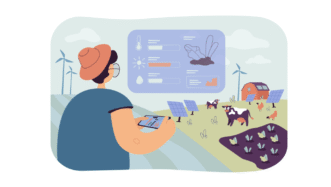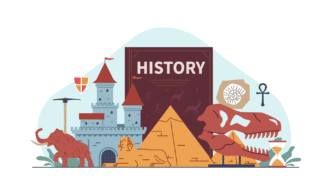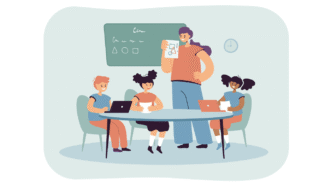LESSON OVERVIEW
With this lesson plan on global problems students will learn some advanced language (adjectives and verbs) to talk about the world’s issues. They’ll also watch a video about reducing food insecurity and discuss solutions to the world’s most pressing problems.
WARM-UP & VOCABULARY
The warm-up activity starts with five questions about the world’s problems with five highlighted adjectives, which students need to match to correct meanings (e.g. urgent – pressing, never-ending – chronic). Then, they focus on a list of the world’s most pressing issues and decide which two are the most dire and the most pervasive, justifying their opinions and adding more issues to the list. The following task presents a set of six gapped sentences describing global problems which need to be completed with six verbs (e.g. eradicate, plague). Students then put the new language into practice through a discussion in which they relate the world problems to their own countries.
VIDEO & SOLUTIONS TO GLOBAL PROBLEMS
Before students watch a video about an innovative idea deployed in several US cities, they look at a related slogan and try to guess what the idea might be about. Then, they watch the video and focus on finding the answers to five specific questions. The listening practice is followed by a vocabulary exercise in which students analyse five extracts from the video and explain the meaning of the words and phrases in bold. Then, students exchange their views on the idea presented in the video. In the final stage of this lesson on global problems, the definition of ‘multi-stakeholder partnerships’ is introduced and students speculate about their role in tackling the world’s problems in the future. Working in groups, students choose one of the objectives from the list of issues presented earlier and discuss how a multi-stakeholder partnership could approach it. Using a set of questions as a guide, they pitch their ideas to other groups.














Wow! Nice one. Great for my proficiency student.
Hope they enjoy it 🙂
Delighted to see this lesson with some truly relevant and high frequency use, vocabulary. I will use it today on one of my ‘super-duper’ students.
I have a query. Item No. 4. Is the past tense of ‘shine’ not ‘shone’?
“Which of the issues has the pandemic shined a spotlight on?” Thank you!
good point this! i noticed it too:)
‘Shined’ and ‘shone’ are both past forms of ‘shine’.
I hope your student enjoys the lesson 🙂
I did a little research that makes sense… “use the traditional rule of using shined with an object and shone without an object unless you have a good reason to deviate.”
eg. The girl shined her headlights at the abandoned house. (object)
The light shone brightly. (no object)
Hi Lydia! We did some further reseach and it seems that the issue might be more complex and there are also differences between BrE and AmE. Check out these articles as they are really interesting 🙂
http://www.grammarlandia.com/2017/03/shone-or-shined.html
https://www.dailywritingtips.com/shone-vs-shined-lit-vs-lighted/
https://motivatedgrammar.wordpress.com/2010/10/18/has-the-sun-shined-or-shone/
Exactly, there are two forms and that’s why in ex. 3a) in the Teacher’s Version we provided both options.
wow I absolutely love this lesson, can’t wait to use it with my high level group! Please make more of these c2 level lessons cause they are absolutely brilliant 🙂
Thank you 🙂 We will do our best 🙂
Thanks for this. Good vocab, challenging exercises and a great video. Keep up the good work.
Thanks 🙂
A great lesson but there is a typo on slides 8/9, sentence D (I’m not sure if we’ll able to…).
It should read: I’m not sure if we’ll be able to…
The word “be” is missing.
Thanks for all of the great content you create!
Thanks for letting us know! Apologies for this typo – we fixed that immediately.
This is a phenomenal topic. Thank you! I love coming to your site and finding exactly what my students need and want in a lesson, especially my advanced adult students. I use your lessons daily!
This is really great to hear 🙂
What a great topic! great lesson, engaging and eye-opening!
Thank you 🙂
Excellent worksheet! My students loved it and it inspired so much discussion we even run out of lesson time. So will continue next time. 🙂 Thank you!
Thank you, Marianna. I’m glad your students liked it 🙂
Excellent worksheet. Inspires great discussion. My students loved it. Thank you!
🙂
Why are the ‘teacher’s version’ all coming as a pdf now? Is that a new thing you’re doing or a mistake.
It’s always been like that. The printable materials are available only in PDFs. If you have them in docs, then I would love to learn where did you get them.
Fantastic, thanks!
Awesome lesson! I’ve lived in the States for 20 years, and I didn’t know about Bento and its powerful work in our society. I also enjoyed the video and the thought-provoking questions. Thank you for sharing your talent with all of us.
I really appreciate your comment!
Extraordinary material! Very insightful as it makes students more aware of the burning issues that worry the world they live in!
Thank you very much!